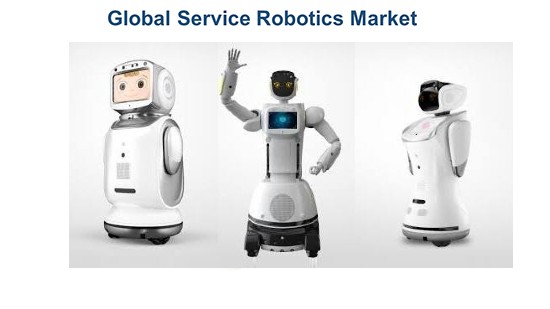· Global consumer service robotics market is expected to grow at a CAGR of 27% during 2021-2025.
· House Cleaning Robots captured over two-thirds of the total market in 2021.
· Personal and Education, and Logistics were the fastest growing categories in 2021.
· Personal and Education Robots had the lowest ASP of around $279 followed by House Cleaning Robots ($626).
New Delhi/London/Beijing, NFAPost: Global consumer service robotics market posted 25% YoY shipment growth in 2021 and is estimated to grow at a CAGR of 27% over the next four years, according to the latest research from Counterpoint’s IoT service.
The growth was driven by the change in consumer preference, advances in technology and the availability of a wide variety of affordable products.

Commenting on the overall market, Counterpoint Senior Research Analyst Anshika Jain said House Cleaning Robots, which mainly comprise robot vacuums, is the most dominant category in the robotics industry, capturing over two-thirds of the total consumer service robotics market.
“Covid-19 has positively impacted the robot vacuum industry, resulting in increased demand from residential users,” said Counterpoint Senior Research Analyst Anshika Jain.
Counterpoint Senior Research Analyst Anshika Jain said with advances in AI, the prices of components and software are also coming down, making the robots more affordable.
“There have also been improvements in technologies like speech recognition and computer vision, which have helped to drive growth. In addition, favorable government policies along with the required funding support are also helping boost the segment,” adds Counterpoint Senior Research Analyst Anshika Jain.

Talking about market growth, Counterpoint Research Vice President Peter Richardson said the consumer service robotics market’s shipments are expected to grow at a CAGR of 27% over the 2021-2025 period with the Personal and Education category taking the highest share of 54% by 2025.
“The category offers the best near-term opportunity due to the rising need for elderly care (especially in combatting isolation), social security and new ways of learning for children. The ASP (average selling price) of this segment is also expected to fall further, which will make these devices more accessible to people in the future,” said Counterpoint Research Vice President Peter Richardson.
He also said Counterpoint estimates that the market opportunity of Personal and Education robots will exceed $4.5 billion by 2025 with substantial further growth expected beyond 2025 due to the aging population in many countries and increasing focus on STEM (Science, Technology, Engineering and Mathematics)-based learning.
“Robots developed for these two use cases will likely have a core set of technologies that can be broadly applied to other emergent segments as well,” adds Counterpoint Research Vice President Peter Richardson.
Market Segments Summary
In this analysis, the consumer service robots have been broken into House Cleaning, Personal and Education, Hospitality, Logistics, Medical and Others segments.
· House Cleaning: Mainly comprising vacuum robots, the House Cleaning segment grew 22% in 2021 and contributed to around 68% of the total consumer service robot shipments. China was the largest market followed by Europe and North America. In this category, the leading players are iRobot, Ecovacs, Roborocks and Xiaomi. All the top OEMs in this category offer in-house hardware and software platforms wherein the companies save all the data on the cloud through partnerships with cloud companies.
· Personal and Education: This is a very fragmented market that mainly comprises companion and education-related robots. It captured around 31% share of the total consumer service robotics market in 2021 and registered 33% YoY growth. Out of all the categories, this segment had the lowest ASP in 2021 at around $279. The main drivers for this category include elderly care, fight against social isolation, personal entertainment and child education.
· Hospitality: This category mainly includes robot front desk attendants used in the hotel service industry to help guests with basic tasks, and disinfection-related robots. Although this segment captured less than 1% share in the total market in 2021, it was one of the fastest growing segments, especially during COVID-19 as guests were looking for new contactless experiences and hotel chains were struggling to find labor due to shortages in the job market. The hotel robot market is in a nascent phase and the low penetration is attributed to high implementation and maintenance costs.
· Logistics: This segment covers delivery robots, mainly used for doorstep food delivery by grocery chains, restaurants and hospitality businesses. The shipments for the delivery robots have remained low as they are expensive to deploy and require massive upfront investments. Starship Technologies, Nuro and Piaggio Fast Forward (a subsidiary of Piaggio) are the key players in this segment. These robots are mainly deployed in the North American market. The average price range for such robots is $2,500-$10,000.
· Medical: This segment comprises surgical, exoskeleton and hospital delivery robots with 61%, 23% and 11% share respectively in the overall Medical category. In terms of regional share, North America is one of the biggest markets and captures almost half of the total segment.
The consumer service robots market holds tremendous potential in the coming years due to evolving use cases. The robot vacuum cleaner market is the most mature, but there is still significant growth potential. The Personal and Education segment is set to drive market growth in the coming period. Logistics (delivery robots) is another major area that has good potential to grow in the medium term due to further technological advances. Medical robots still seem a risky proposition as they need a lot of upfront capital expenditure, and the R&D outcomes are unpredictable.





